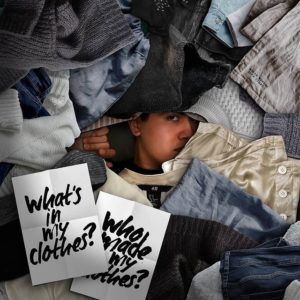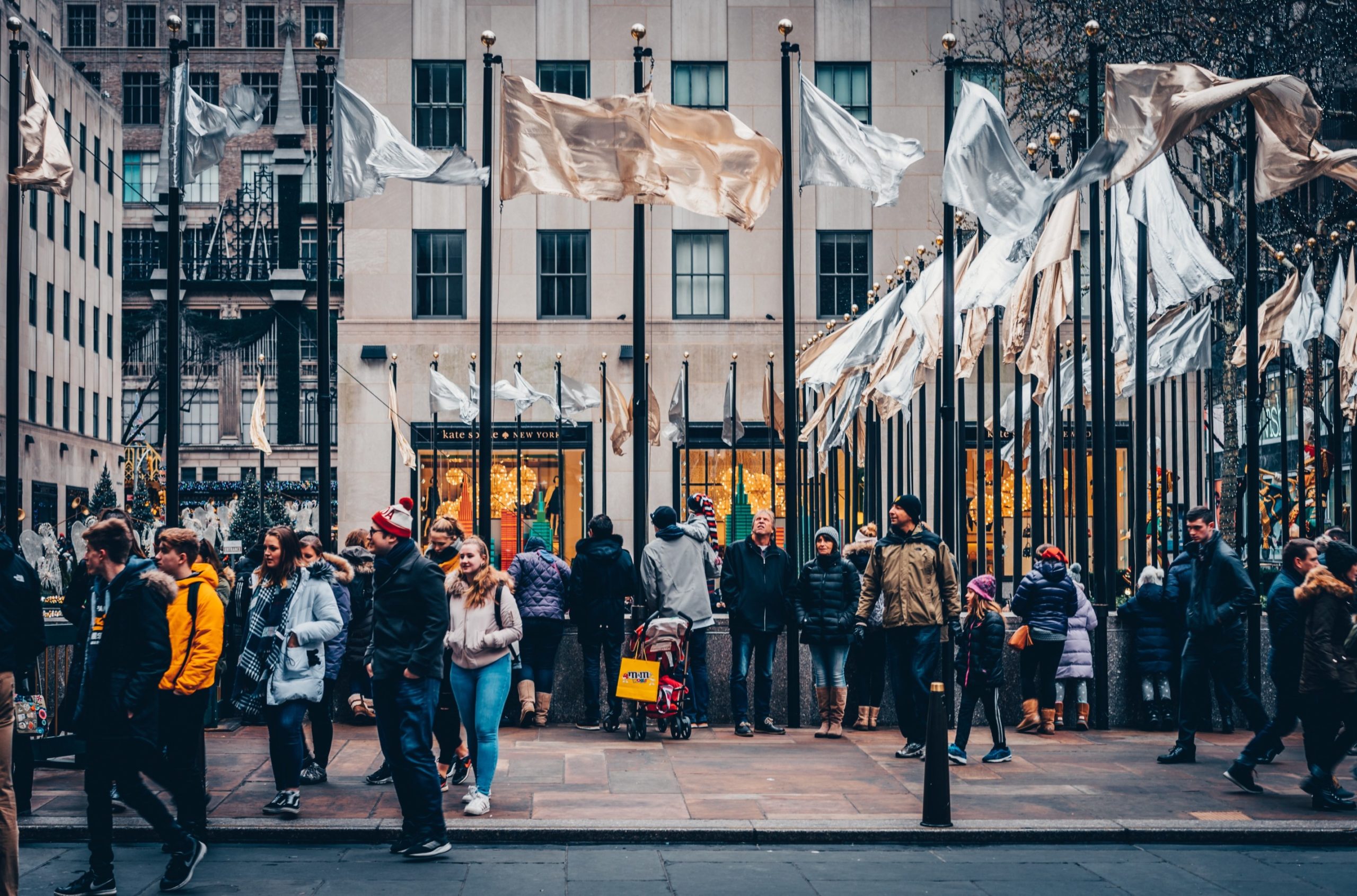On January 7, 2022, a radical new Fashion Act was presented in New York state. If passed, the bill aims to hold the largest fashion brands accountable for their impact — both social and environmental.
The Fashion Act will apply to any global clothing or footwear company that is doing business in New York, and that has over $100 million in revenue. So think of any large multinational fashion name and it’ll most likely apply to them. All the way from high-end luxury labels like Gucci, LV, and Chanel to fast-fashion behemoths H&M, Zara, and Shein.
First – what does it state?
If passed, the Fashion Act will require these companies to map out a minimum of 50% of their supply chains. This includes transparency in the origin of raw materials, factories, and shipping. Furthermore, the companies will be required to report where they have the greatest social and environmental impact.
The impact is based on several factors. This includes greenhouse gas emissions, use of virgin vs. recycled materials, chemical and water management, and fair worker wages. The companies will also have to make and disclose a concrete plan of action to reduce their impact. Finally, there will be fines levied on brands for non-compliance which will be used for environmental justice projects in the state. This is a big deal — potentially a major game-changer — in an industry where fines like this are hard to come by.
If anyone is interested in the finer points of the Fashion Act, you can read more here.
But hold your horses. The bill hasn’t been passed yet. It has to go through several bureaucratic procedures before it actually comes into effect. The bill needs to be passed in both the Senate and State Assembly before it is passed to Kathy Hochul, New York governor, who will then sign it into law (or veto).
Predecessors of the bill
The fashion industry is one of the largest culprits of pollution and CO2 emissions out there. We don’t need to bore you with the gory details, we’re all familiar with them.
There has been a rising tide in efforts to regulate the industry in the past few years. The premise of the Fashion Act is not entirely unprecedented. For example, California passed the Garment Worker Protection Act last year which would protect workers from wage violations in the state. And several countries in Europe already have legislation in place requiring companies to disclose the environmental and social impacts of their supply chain.
There are also several rating systems such as Good On You, Fairly Made, Clear Fashion, and B Corp that rate companies on sustainability metrics. While these ratings can’t enforce change in companies, they are useful tools for consumers and even investors looking for sustainable brands.
Also worth looking at is Fashion Revolution’s Fashion Transparency Index (you can find the 2021 report here). The index ranks brands from around the world on transparency in their supply chain, including social and environmental impact. A key point to note is that transparency ≠ sustainability, a point that Fashion Revolution makes too. Some of you may remember the H&M controversy of 2020, when the notorious fast-fashion culprit topped the transparency list. The controversy arose when the brand posted on its Instagram with a self-declared claim that it was the most sustainable brand. That’s quite a leap of logic. (Note: The brand promptly deleted the IG post after the fierce backlash it received). #GreenwashAlert? We’re looking at you, H&M.

The beginning of a revolution?
The New York Fashion Act has received a lot of applause across the globe, from climate activists and influencers to sustainable business owners and members of the fashion community. Many feel that New York is making waves in the world of sustainable fashion, a much-needed move in the industry.
Influential fashion and sustainability nonprofits have voiced their support, including designer Stella McCartney, the New Standard Institute, the Natural Resources Defense Council, and the New York City Environmental Justice Alliance.
“If we were going to do this, we wanted to do this right,” New York state senator Alessandra Biaggi, one of the sponsors of the bill, tells Vogue. “The bill has the power to shift the impact of greenhouse gas emissions in New York and, frankly, worldwide.”
She (and the other creators of the bill) may be on to something. While the Fashion Act joins other efforts to regulate the industry, its scope stands out. It covers often overlooked issues such as production volumes and workers’ wages. And what’s pretty spectacular about the bill is that it’ll affect pretty much every major player in the fashion world.
While there’s definitely a shift towards transparency amongst brands, it has so far remained voluntary and unregulated. Maxine Bédat, director of the New Standard Institute, says this act is revolutionary in that it will make it mandatory for brands to be transparent and hold them accountable for their actions.
“The intention of the bill is to get both very clear reporting and then meet targets based on that reporting,” she said to Vogue. “We need it to be the most robust and aggressive bill possible that can get passed, and that’s what we presented here.”
All that glitters is not gold
While many are showing enthusiasm and excitement about the revolutionary Fashion Act, there has been some thought-provoking critique as well. Specifically, when it comes to diversity and representation, many think the bill falls short.
“When I first saw it, I was excited,” Dominique Drakeford, cofounder of Sustainable Brooklyn and founder of MelaninASS, said to Vogue. But once she looked deeper into the creation of the bill, she immediately noticed the lack of diversity in the coalition that created it.
“I was disappointed with the fact that so many voices, and especially Black, Brown and Indigenous voices, weren’t included in the decision-making process or the initial creation of this bill — this bill that really could transform the industry,” she said.
Céline Semaan, the founder of The Slow Factory, echoes her sentiment.
A small group of white people worked on a fashion act in NY to impose on brands they claim to have interviewed in the process of writing the bill. The group behind this bill did not extend the responsibility to their peers, they didn’t involve the community. What could go wrong?
— Céline Semaan (@celinecelines) January 12, 2022
“…this elite group have positioned themselves as fashion’s white saviour, extracting data without any open access or framework for public accountability,” she says on her Twitter.
We also reached out to Liv Simpliciano, policy and research manager at Fashion Revolution to hear her thoughts.
“While we welcome any legislation that regulates the social and environmental impacts of the fashion industry, the Fashion Act proposal falls short in explicitly protecting garment workers or the environment,” she says. “We are in a climate crisis, we do not have time to propose new legislation that allows for corporate loopholes and the maintaining of the status quo.”
“The Fashion Act is an indication of a step in the right direction but it needs more teeth, like sanctions for non-compliances, to ensure the protection of garment workers, the environment and to truly hold brands and retailers accountable for their human and environmental impacts,” she adds.
And finally, the elephant in the room — will transparency alone lead to significant change? Critics argue that it’s just not enough. First, companies can choose what 50% they want to disclose. What’s to stop them from reporting their best practices and leaving their dirty secrets undisclosed? Second, the law emphasizes disclosing negative impacts with little to no requirements to compensate for or correct them. Will this encourage companies to simply air their dirty laundry in public with little concern for fixing the problems?
A good first step
But even critics agree that the Fashion Act is definitely a move in the right direction. Whatever the critique may be, the bill has already sparked discussion and debate amongst people from around the world. And this is important.
“This is an important moment in that it brings this conversation into mainstream policy discussions,” says Devin Gilmartin, founder of The Canvas, a community that uplifts and brings together ethical fashion brands. “This is a start, not a complete solution to the problem.”
He’s taking a realist approach to the situation.
“No, it’s not enough, but implementing policies like this is a good way to onboard more stakeholders and pave the way for future legislation. Overly ambitious policies can be a deterrent to change,” he says. “A healthy dose of realism and diplomacy is a good way to change minds over time, rather than cause panic and greenwashing. Bad actors should have a chance to change their ways, but must be given a reasonable window to do so that does not sink their businesses.”
What do the small players think?
The Fashion Act in its current form doesn’t apply to small sustainable businesses. However, with their commitment to sustainability and transparency, many of them are already in line with the bill. They may be small, but who knows — they might just end up being the gold standard that the industry will soon have to follow. We reached out to a couple to hear their thoughts.

Tina Bhojwani, founder of NY-based sustainable luxury shoe brand AERA, is encouraged by the bill.
“The only way to achieve meaningful change is for the government to step in and create legislation and standards by which businesses should operate. The fashion industry as a whole lacks regulation, and I am personally very proud that my city is taking the lead on such a critical initiative, especially as New York is a global fashion capital,” she says.
Bhojwani is also the co-founder of Figure Eight, a luxury sustainable fashion pop-up in NYC’s Soho. She believes that small conscious brands such as hers are examples of what is possible in the industry. These brands can be seen as models for change in the larger companies. “I am of the opinion that all businesses, regardless of size, should adhere to this new regulation,” she adds.
Stephen Hawthornthwaite, co-founder of cult-favourite sustainable shoe brand Rothy’s, believes it’s an important first step.
“If passed, New York’s Fashion Act would drive accountability desperately needed in the fashion industry. Transparency is a tool that can motivate brands to look deeper into their supply chains and establish more rigorous environmental and social standards,” he says. “On its own, it’s unlikely that this bill will solve the social and environmental problems of the fashion industry at the scale and pace that’s needed. However, the bill could set an important precedent and provide a framework to better differentiate the brands that are building more responsible supply chains.”
What next?
No one will dispute that transparency is a good first step. It’s a necessary baseline level for holding brands accountable for their actions. But will it translate into action? We’ll find out soon enough!
The New York Fashion Act may be the start of a revolution, but we still have a long way to go before the battle is won.

